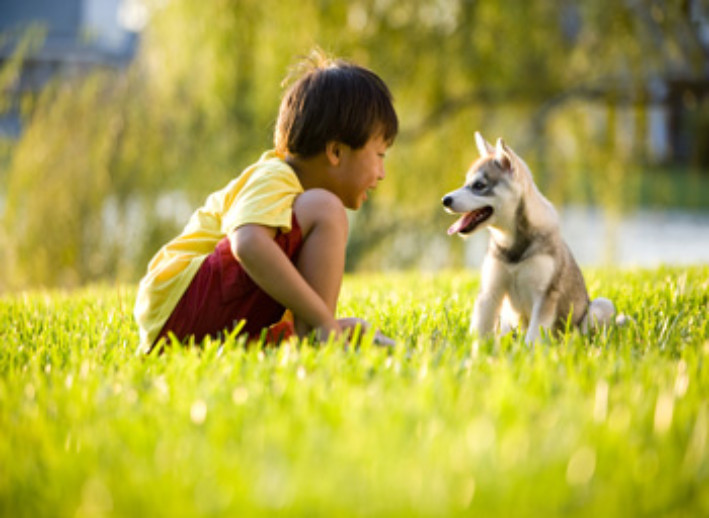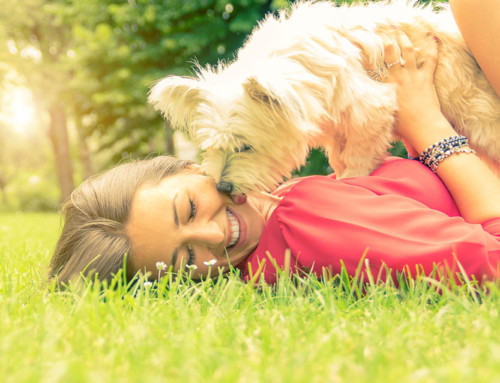Even if you fancy yourself a bit of a dog whisperer, there will be instances where you find it hard to communicate with your pet. Dogs communicate almost entirely through body language, so it’s important for dog owners to understand their pet’s behaviour to be able to communicate and interact successfully.
Whether it’s learning what makes your dog happy, or noticing when they’re uncomfortable or trying to tell you something, it’s vital to understand your dog’s body language. Let’s delve into the world of pet communication and find out…
How to tell if your dog is happy
Happiness is perhaps the easiest emotion to identify through a dog’s behaviour. When your dog is excited, content or relaxed, you’ll be able to tell through the following identifiers:
- A relaxed, soft, even ‘floppy’ body.
- Relaxed ears.
- Panting with a ‘happy’ expression – almost a dog version of a smile!
- Energetic displays, such as running around playfully or leaping into the air.
- Wagging tail. Be careful with this one – in some dogs, it can actually indicate agitation rather than happiness. But if your dog’s whole body seems to be wagging as well, and some of the above signs are also present, it’s a safe bet that they’re happy.
Learning how to recognise what makes your dog happy is very important. After all, what else could a dog owner want other than a content pet?
How to tell if your dog is scared
Nobody likes to see their dog scared, but most pets will become frightened at some stage or another. When your dog is afraid of something or someone, it will likely exhibit the following signs:
- Barking or aggressive movements.
- Lowered head.
- Tucked-in tail.
- A hunched-over posture – the dog will be trying to make itself appear as small as possible.
- Closed mouth.
- Licking or over-exaggerated yawning.
- Nervous urination.
- Narrowed eyes or a submissive ‘grin’ with exposed teeth.
Some dogs are more prone to being scared and exhibiting fearful behaviour than others. If your dog displays any of the above signs particularly often, it might be worth consulting with your vet or a dog behaviourist, who can provide specialised advice or training to raise your dog’s confidence.
How to tell if your dog is angry
An angry, agitated or aggressive dog can be dangerous. If your dog, or any other dog you come across, is displaying any of the following signs, it might be best to leave them alone:
- Raised hackles.
- Growling and/or displaying teeth.
- Ears erect and pointing forward.
- Stiff body, tail and stance, with front legs out and apart.
- Head extended forward with a focused stare.
If your dog is prone to aggression and displays these behaviours whenever it’s confronted with a stranger or another dog, you might have cause for concern. To help deal with your dog’s aggression, seek specialised advice, training or behavioural programs to prevent future problems.
How to tell if your dog is anxious
There are particular signs and symptoms that can help you tell the difference between a stressed, anxious dog and a scared or angry one. Some of these signs include:
- Shaking or trembling.
- Excessive yawning (not a tired yawn).
- Licking or drooling.
- Pacing back and forth.
- Lowered eyelids (this occurs especially when a dog is receiving unwanted attention).
- Vocalisation such as whining.
- Destructive behaviour.
Anxiety can be a real problem for some dogs. If your pet constantly displays these symptoms, seek professional advice, and try reducing stress by encouraging more exercise and limiting situations in which they become easily stressed.
***
Once you learn to recognise your dog’s emotions, pet communication will become a breeze!









